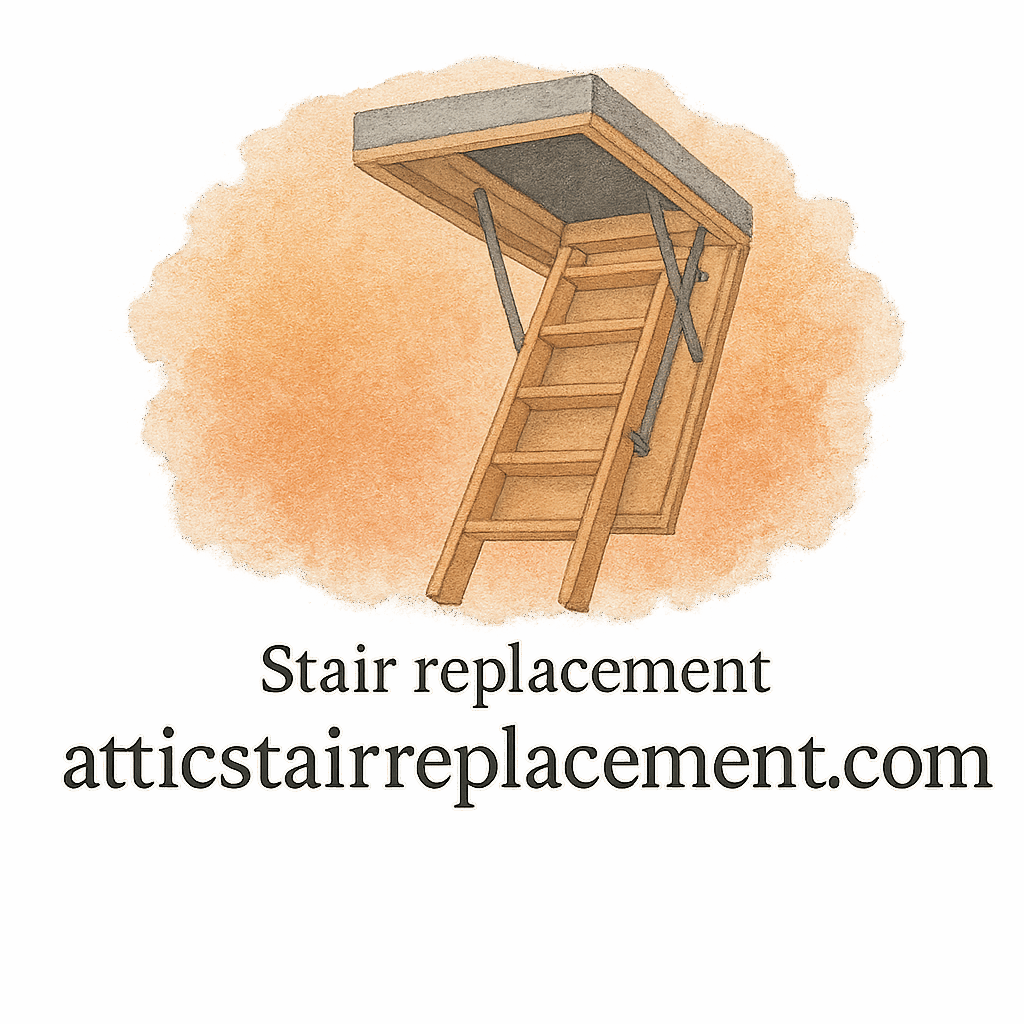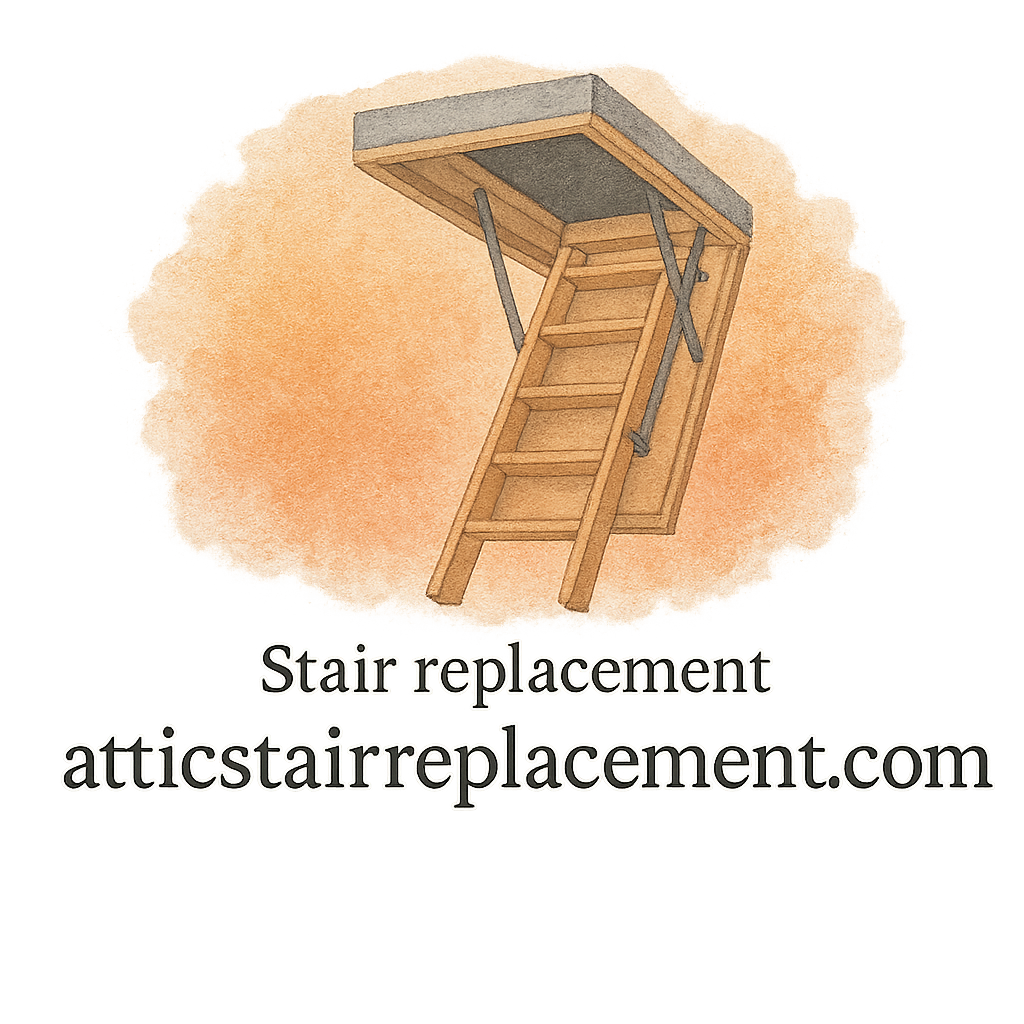When it comes to attic stair replacement, most homeowners focus on the basics—installing something functional that gets the job done. But here’s the thing: this project is more than just swapping out an old ladder. It’s an opportunity to make smart upgrades that boost safety, save money long-term, and even improve your home’s value.
Think of it like replacing the tires on your car. Sure, you could grab the cheapest option, but investing in quality tires means better performance, safety, and fewer headaches down the road. The same principle applies to your attic stairs.
Let’s walk through 7 smart investments you should consider during attic stair replacement to get the best results.
Why Attic Stair Replacement is a Smart Home Project
Upgrading your attic stairs isn’t just about convenience. It ties directly into home improvement goals like energy efficiency, storage solutions, and safety. An old, squeaky, or unstable attic stair can cause injuries, waste energy, and even damage stored items.
By replacing them thoughtfully, you’re not just fixing a problem—you’re making a long-term investment in your home.
For more expert insights, check out this resource: expert advice.
Investment #1: Choosing Durable Materials
Benefits of Heavy-Duty Attic Stairs
If you’ve ever climbed up a flimsy attic ladder, you know how nerve-wracking it feels. Choosing durable, heavy-duty materials gives you confidence every time you step up.
Stairs made of steel, reinforced wood, or aluminum aren’t just sturdier—they last longer and can handle higher weight capacities. This makes them perfect if you frequently store heavy boxes or equipment in your attic.
Learn more about durable attic stair solutions here: durable.
Long-Term Cost Savings
Yes, stronger materials may cost more upfront, but they pay off in the long run. Instead of replacing your stairs every 5–7 years, a heavy-duty option could last decades with proper maintenance.
Investment #2: Professional Installation vs. DIY
When to Hire a Contractor
Not everyone has the tools or carpentry skills to safely handle attic stair replacement. Hiring a contractor ensures proper alignment, load-bearing installation, and compliance with safety standards.
A professional might also spot hidden issues—like insulation gaps or framing problems—that you’d miss on your own.
DIY Attic Stair Replacement: Pros and Cons
If you love tackling DIY projects, installing attic stairs yourself can save money. Plus, you’ll feel that rewarding “I built this” satisfaction.
But here’s the flip side: a mistake could lead to injuries, wasted materials, or costly repairs.
Tools and Safety Considerations
If you go the DIY route, you’ll need proper tools like a circular saw, level, safety harness, and heavy-duty drill. Follow detailed guides such as DIY installation tips to avoid common pitfalls.
Investment #3: Energy-Efficient Insulation
Preventing Heat Loss
Your attic stairs are often the biggest culprit for heat escaping from your home. Adding energy-efficient insulation around the hatch prevents warm air from leaking out in winter and cool air from escaping in summer.
Lowering Energy Bills
This one-time investment saves you money month after month. According to energy experts, sealing attic access points can cut heating and cooling costs by up to 20%. That’s not just comfort—it’s real financial savings.
For related projects, explore home improvement ideas.
Investment #4: Upgraded Safety Features
Slip-Resistant Steps
One small slip can turn into a serious accident. Investing in stairs with slip-resistant treads keeps you and your family safe, especially when carrying storage boxes.
Strong Handrails and Locks
Adding a sturdy handrail or a locking mechanism is another smart move. It gives extra stability and ensures that the stairs don’t accidentally fold while in use.
Want more safety-related insights? Check out residential safety guides.

Investment #5: Space-Saving Stair Designs
Compact Folding Stairs
If space is tight, compact folding stairs are a game-changer. They tuck neatly away when not in use, freeing up ceiling space and making the attic entry less noticeable.
Telescoping and Modern Alternatives
Modern telescoping stairs are lightweight, durable, and sleek. They also add a touch of modern design to your home.
More design-focused inspiration is available under renovation projects.
Investment #6: Maintenance-Friendly Options
Easy-to-Clean Materials
Dust and attic debris can build up fast. Choosing materials that are easy to clean—like powder-coated aluminum—keeps your stairs looking good and functioning properly.
Low-Maintenance Hinges and Springs
Opt for designs with rust-resistant hinges and durable springs. This reduces squeaks, sticking issues, and the need for constant lubrication.
For more upkeep tips, browse maintenance and repair.
Investment #7: Adding Extra Storage Solutions
Built-in Storage Around Attic Entry
Some stair systems come with built-in shelving or extra support for storage bins. This helps maximize every inch of space around the entryway.
Maximizing Overhead Space
By upgrading to smarter designs, you can use the attic for more than just “holiday decorations and old boxes.” Think of it as hidden real estate in your home waiting to be used.
For more attic-focused tips, explore attic home projects.
Hidden Costs to Watch Out For
Even with a solid budget, unexpected expenses can creep in—like damaged ceiling drywall, old insulation that needs replacing, or disposal fees for your old stairs. Always budget at least 10–15% extra for hidden costs.
Read more about managing them here: hidden cost tips.
Common Mistakes to Avoid During Replacement
- Choosing the cheapest option without considering durability
- Ignoring insulation and energy efficiency
- Attempting DIY without proper tools or knowledge
- Forgetting about safety upgrades
See more common mistakes homeowners make during attic stair replacement.
How to Balance Budget and Quality
It’s tempting to save money upfront, but cheap stairs often mean expensive problems later. Instead, think about value over price. Investing in quality, safety, and durability means you won’t have to redo the project anytime soon.
For budget-friendly insights, check out budget tips.
Final Thoughts on Attic Stair Replacement Investments
Replacing your attic stairs isn’t just a quick fix—it’s a chance to upgrade your home for the future. From durable materials and energy efficiency to modern safety features and smart storage, each investment pays off in comfort, savings, and peace of mind.
So next time you’re planning an attic stair replacement, don’t just think about climbing up and down. Think about how these upgrades can make your home stronger, safer, and more efficient.
For more in-depth resources, visit attic stair replacement.
FAQs
1. How often should attic stairs be replaced?
Most attic stairs last 10–15 years, but heavy-duty options can last much longer with proper care.
2. Is it worth hiring a contractor for attic stair replacement?
Yes, especially if you’re not confident in your DIY skills. A contractor ensures safe, long-lasting installation.
3. Can attic stair replacement improve my home’s energy efficiency?
Absolutely. Adding insulation around the hatch reduces heat loss and lowers energy bills.
4. What’s the safest type of attic stairs?
Models with slip-resistant steps and handrails are the safest, especially for families.
5. Are telescoping attic stairs durable?
Yes, modern telescoping designs are lightweight, strong, and built to last.
6. How much should I budget for attic stair replacement?
Expect to spend between $300–$1,000 depending on materials, installation, and extra features. Always plan for hidden costs.
7. What’s the biggest mistake homeowners make with attic stairs?
Skipping safety and insulation upgrades—both of which are essential for long-term value.


